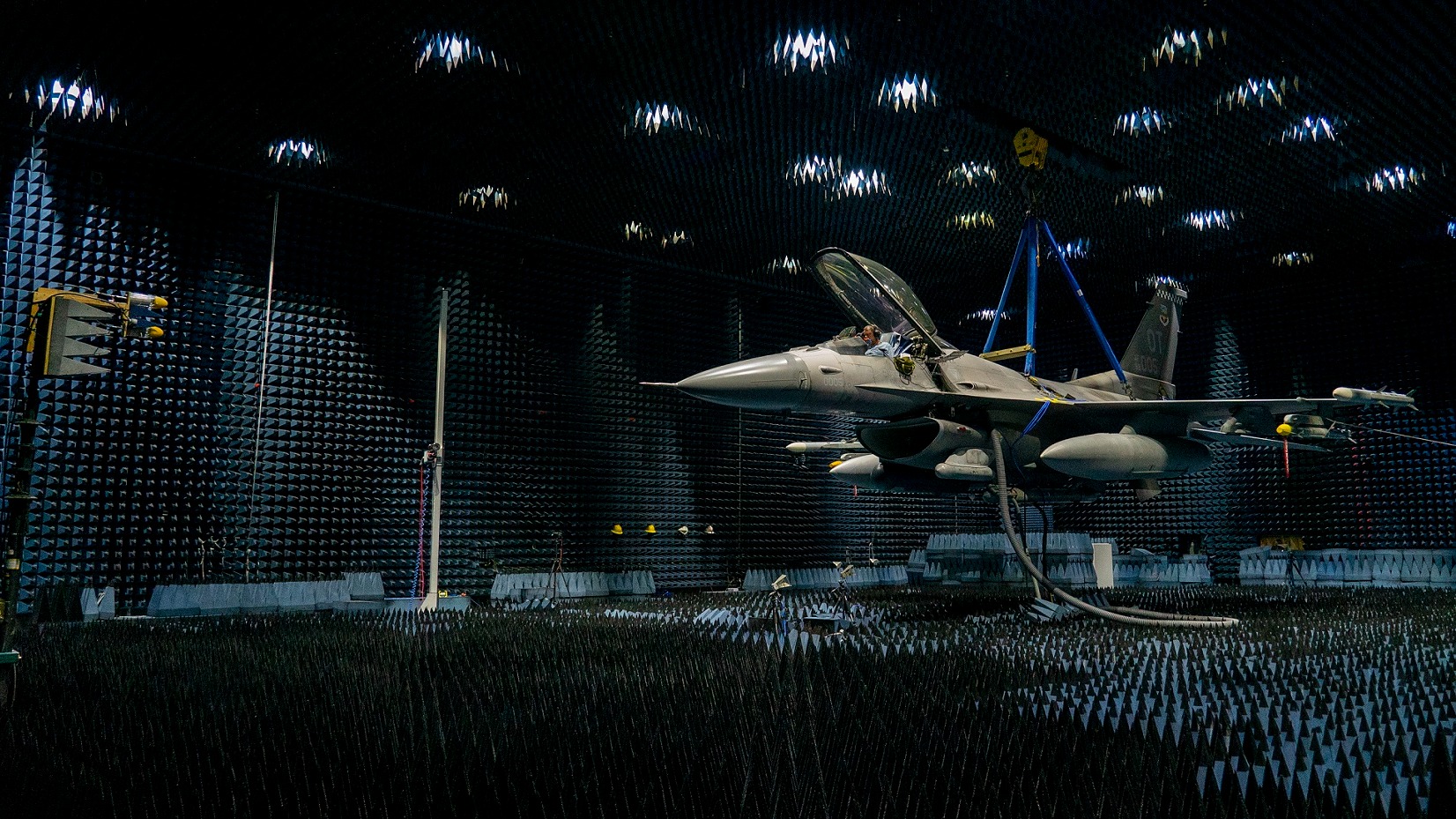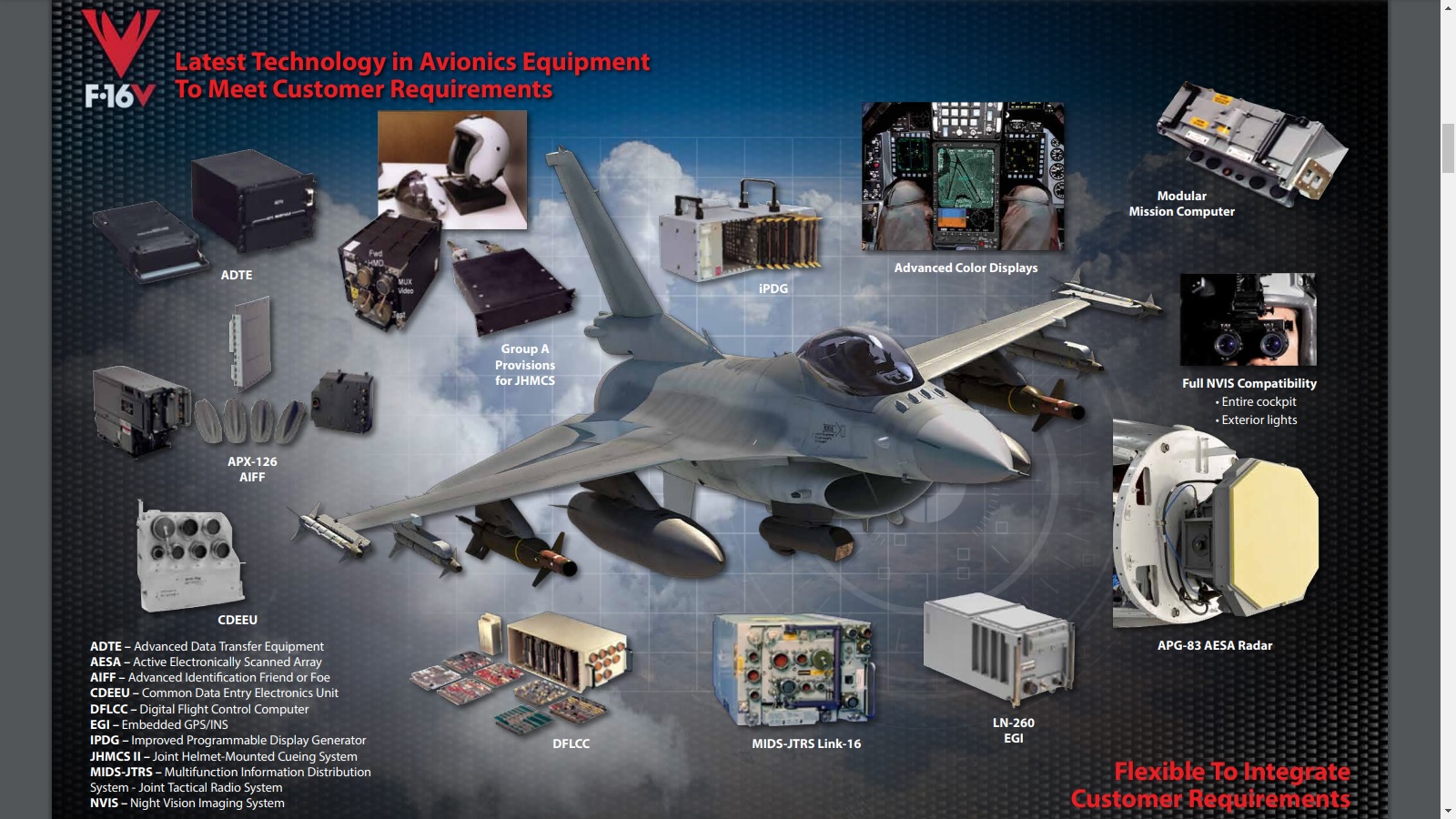Electronic Warfare: The Pillar Sustaining the F-16 Beyond 2040
The advanced IVEWS and Viper Shield systems are central to the modernization of the F-16 fleet.
Nearly five decades after its entry into service, the F-16 Fighting Falcon continues to cement its position as one of the world's most versatile and long-lived fighters. However, its projected operational life beyond 2040 doesn't rely solely on structural or avionics upgrades. Its relevance in highly contested combat scenarios rests primarily on its Electronic Warfare (EW) capabilities.
In an environment defined by multispectral combat and the proliferation of advanced threats, the integration of next-generation systems and the efforts of the PoBIT (Post Block Integration Team) program are the elements ensuring the F-16 remains a relevant actor.
From Multirole Fighter to Multispectral Combattant
Originally designed in the 1970s as a light air combat fighter, the F-16 evolved over time into a multirole aircraft capable of executing a multitude of missions. Yet, the technological leap demanded by contemporary aerial warfare has redefined modernization priorities: survival in environments saturated by multi-frequency radars, advanced surface-to-air missiles, and electronic denial systems increasingly depends on the aircraft's ability to operate, contest, and dominate the electromagnetic spectrum.
In this context, electronic warfare becomes the core of the F-16's modernization, allowing it not only to protect and survive but also to act as a force multiplier within data-centric combat networks.

Viper Shield: The F-16V Export Standard
The AN/ALQ-254(V)1 Viper Shield, developed by L3Harris/RTX, represents the qualitative shift in standardized electronic protection for the F-16. This system is natively integrated into the Block 70/72 production line and is also offered as a modernization solution for existing fleets.
Viper Shield combines wide-spectrum digital receivers, adaptive countermeasures techniques, and an open architecture. Its primary mission is to increase survivability against modern threats by detecting, classifying, and neutralizing hostile radar signals. Its modular architecture allows it to synergistically integrate with advanced sensors like the AN/APG-83 AESA radar, creating a multispectral situational awareness environment.
This system is a decisive factor in the F-16's international appeal. A recent example is the potential sale of 12 F-16 Block 70s to Peru, authorized by the U.S. State Department in September 2025, which includes Viper Shield as a key component to guarantee the fighters' operational effectiveness against advanced air defenses. It was also offered for the modernization of Polish F-16s. Viper Shield's success in the FMS market establishes a global standard of interoperability for the Viper version.
IVEWS: The USAF Contender
In contrast to Lockheed Martin's export standard, the USAF has invested in the development of its own system: the AN/ALQ-257 Integrated Viper Electronic Warfare Suite (IVEWS). This program, led by Northrop Grumman, is focused on equipping U.S. fighters with "fifth-generation electronic countermeasures" capabilities, including a Digital Radar Warning Receiver (DRWR), a self-protection jammer, and towed decoys.
The strategic and financial value of this program is immense. Analysis by Teal Group projects that the EW segment for the USAF fleet could amount to an investment of USD $6 billion to USD $12 billion over the next decade. This forecast illustrates that the electronic defense system is the financial core of the operational life extension for American F-16s.
Although IVEWS is in the USAF-funded development phase, the final decision for mass production acquisition for the bulk of the 600 Block 40/50 aircraft remains open, setting up a direct competition with L3Harris' Viper Shield.
PoBIT: The USAF's Underlying Strategy
The centrality of electronic warfare is channeled through the PoBIT (Post Block Integration Team) program. Initiated in 2022 with a total budget of approximately USD $6.3 billion, this program includes up to 22 modifications across 608 Block 40/42 and 50/52 aircraft.
The budgetary commitment remains unaltered: the Department of Defense for Fiscal Year 2026 (FY2026) reaffirmed the program's continuity, including a specific allocation of USD $50 million dedicated to the Electronic Warfare segment. This funding confirms that, despite the gradual transition of some units to the F-35, there is no intention to reduce or cancel the PoBIT effort. The strategic goal is to maintain the F-16 fully operational at least until the mid-2040s.

It is within the PoBIT framework that the "next-generation" EW system (whether IVEWS or Viper Shield) will be installed, ensuring the F-16 is not outpaced by emerging threats.
A Continuing Role in the Future Combat Architecture
The persistence of the F-16 is not a response to nostalgia, but to operational logic: its adaptability. In a scenario characterized by the convergence of sensors, networks, and domains, electronic warfare becomes the linchpin that allows a fourth-generation platform to maintain its relevance.
By integrating into collaborative combat architectures alongside stealth fighters and unmanned systems, an F-16 equipped with advanced EW can perform essential functions: participating in opening corridors in A2/AD environments, protecting high-value assets, and contributing to electromagnetic spectrum superiority. Beyond its kinetic or sensor improvements, it is this capability to operate, contest, and dominate the spectrum that explains why the F-16 will continue to be a key player in aerial warfare for the next decade and beyond.

/https://aviacionlinecdn.eleco.com.ar/media/2025/10/f_16_camara_anecoica.jpeg)
Para comentar, debés estar registradoPor favor, iniciá sesión